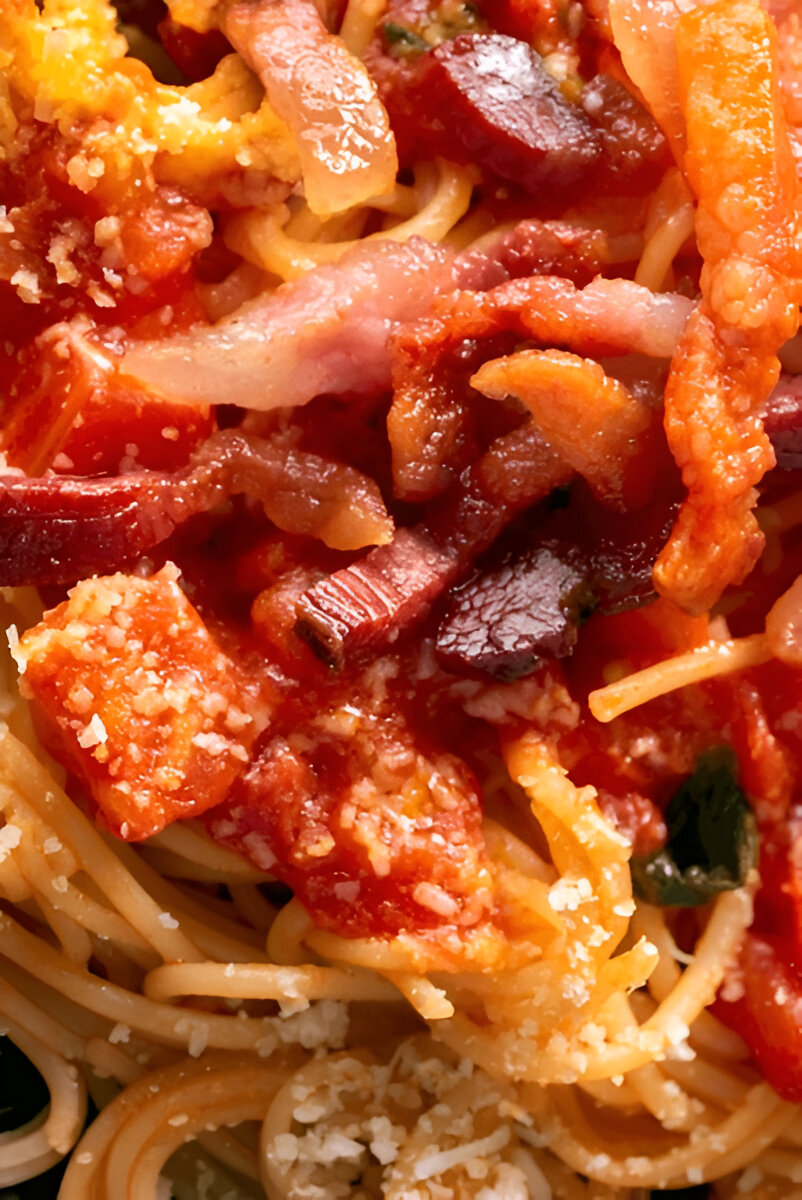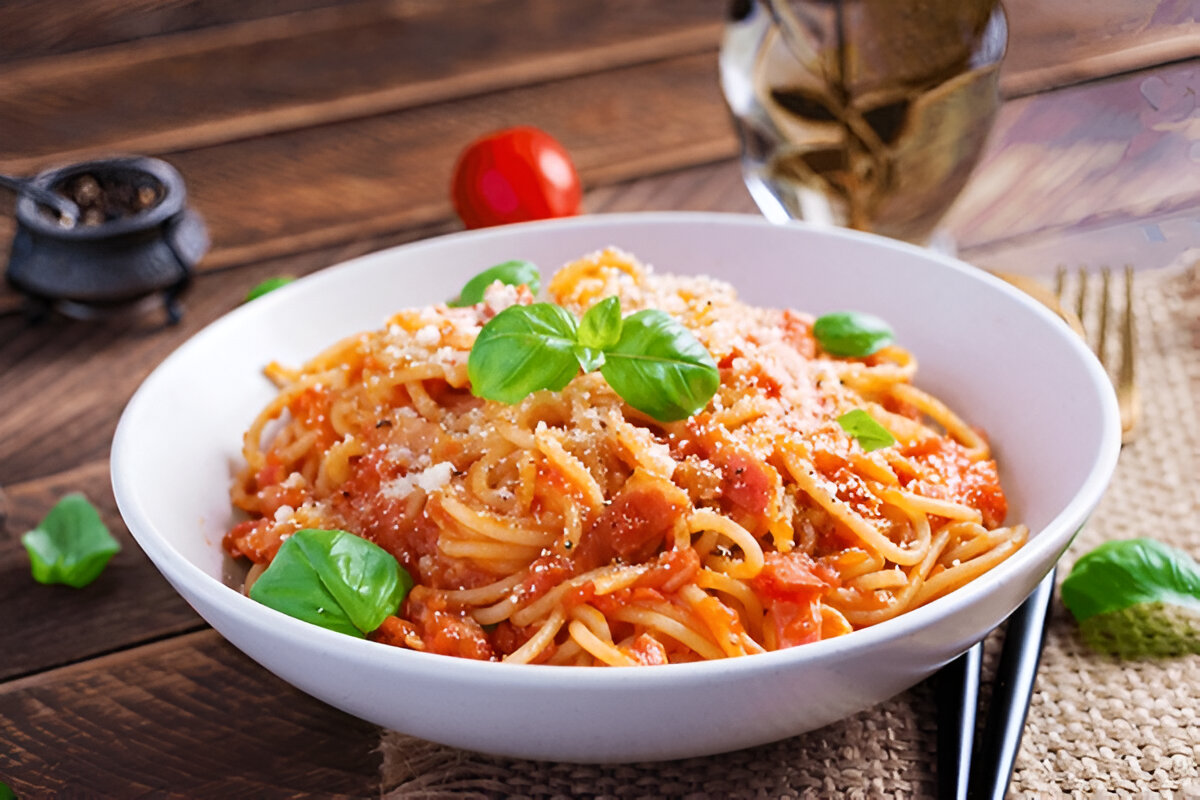Amatriciana is a beloved Italian pasta dish originating from the town of Amatrice in the Lazio region. Known for its bold yet simple flavours, it combines cured pork, tomatoes, pecorino cheese, and a hint of chili for spice. Traditionally served with bucatini pasta, it has become a staple of Roman cuisine and is cherished worldwide for its authentic taste.

Amatriciana:
This recipe balances richness and tanginess, creating a comforting meal perfect for both casual family dinners and elegant gatherings. Its rustic origins showcase the Italian philosophy of using high-quality, minimal ingredients to craft dishes that are timeless and deeply satisfying.
History of Amatriciana:
Amatriciana dates back to the 18th century, originally prepared with guanciale (cured pork cheek) and pecorino cheese. The tomato version we know today became popular in the 19th century. Over time, it spread from Amatrice to Rome, becoming one of Italy’s most iconic pasta sauces.
Amatriciana
Ingredients
- 12 oz bucatini pasta
- 4 oz guanciale (or pancetta if unavailable)
- 2 tbsp olive oil
- 1 can (14 oz) crushed tomatoes
- ½ tsp red chili flakes
- ½ cup pecorino Romano cheese, grated
- Salt and black pepper to taste
Instructions
- Cook pasta in salted water until al dente.
- Heat olive oil in a skillet and sauté guanciale until crispy.
- Add chili flakes and stir.
- Pour in crushed tomatoes and simmer for 15 minutes.
- Drain pasta and toss with sauce.
- Sprinkle with pecorino Romano before serving.
Notes
- Use guanciale for authentic flavour.
- Pecorino Romano is traditional, avoid Parmesan substitutes if possible.
- Bucatini is preferred, but spaghetti works too.
- Simmer sauce slowly for deeper flavour.
- Don’t overcook the pasta; keep it al dente.
Tips for Amatriciana:
- Reserve some pasta water to adjust sauce consistency.
- Cook guanciale on low heat to render fat properly.
- Use fresh pecorino for best results.
- Add extra chili flakes for more spice.
- Serve immediately for maximum freshness.
FAQ’s for Amatriciana:
Q:Can I use bacon instead of guanciale?
Yes, but flavour will differ slightly.
Q:Is pecorino Romano necessary?
It’s traditional, but Parmesan can be a substitute in a pinch.
Q:What pasta works best?
Bucatini is classic, but spaghetti or rigatoni also pair well.
Q:Can I make this vegetarian?
Yes, but you’ll lose the signature guanciale flavour.
Q:How long does it keep?
Store leftovers in the fridge for 2 days.
Conclusion:
Amatriciana is a timeless Italian pasta dish that combines simplicity with bold flavours. With its roots in traditional Roman cuisine, it remains a beloved favourite across the world. By using authentic ingredients and classic techniques, you can enjoy a comforting meal that truly represents the heart of Italian cooking.

